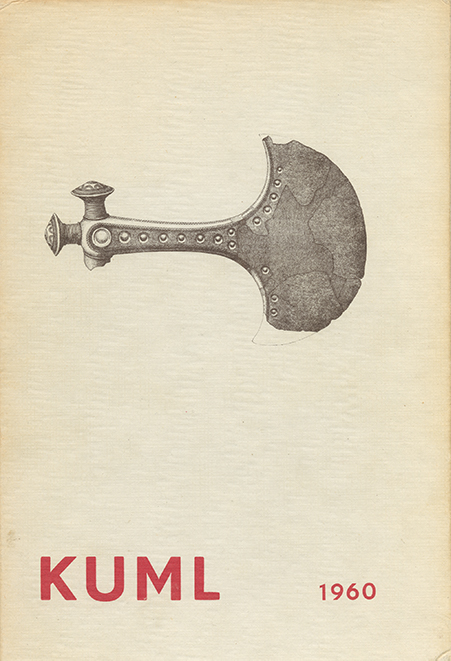Sideroret fra Vorså
DOI:
https://doi.org/10.7146/kuml.v10i10.103110Keywords:
Steering oar, ror, Vorså, 9 to 12 century, 9 til 12 århundrede, 9, 10, 11, 12, century, århundredeAbstract
The Steering Oar from Vorså
In 1958 a well-preserved steering oar was fished up in the Kattegat off north Jutland near Vorså and was presented by the finder to tbe Bangsbo Museum at Frederikshavn. It comes from a stretch of coast where wrecks are frequently discovered. For example, in 1922 a wreck which should probably be dated to the 11th-12th centuries was investigated at the river Elling near Frederikshavn.
The oar is of oak, very slender and well-formed (figs. 2 and 3). The blade measures 1.92 metres, and the total length is 2.80 metres. The width of the blade increases from 0.175 m. at the top to 0.375 m. at the bottom, where the aft edge forms a little "heel", while its thickness decreases from 10 cms. to 1.5 cms. The sections show that the oar blade is asymmetrically formed, the side towards the ship being almost flat while the other side is curved to a greater or less degree. The fore edge is sharp, while the aft edge is fairly square-cut. At the top there are two oval holes for attachment of the rudder bar, and at the thickest point there is a hole of 4.7 cms. diameter for the withe in which the steering oar was hung.
This type of steering oar is known from illustrations and from previous discoveries, in particular the ships from Gokstad 5) and Oseberg 6). A close parallel is provided by a Swedish oar found in Östra Aros 7-8) (Fig. 4). Various modes of suspension have been proposed to explain the many holes and marks of wear on this oar. In the case of the Vorså oar the two holes for the rudder bar are explained by the fact that the oar could be used in two positions, almost vertical during deep-water sailing, or, for shallow-water sailing, turned around the withe into an oblique position where the lower edge of the oar came level with the keel. This feature suggests that the oar belonged to a merchant ship which could only with difficulty be manoevred by means of oars alone. The asymmetrical section resulted in the oar lying close in to the ship, so that wear on the withe in which it hung would be minimal.
The form of the oar shows that it is Scandinavian, and probably of 9th-12th century in date. It is natural to place it in association with a number of discoveries made along the east coast of Jutland. A series of discoveries has here been made of Viking-Period artifacts of Norwegian origin, objects of soapstone, in particular bollards 14 ), and 12 axeheads assembled on a stick for ease of transport 16). These bear witness to busy sea-traffic from Norway to the trade centre of Hedeby by Denmark's former southern frontier. Wrecks of ships and isolated parts of ships from the same period found along this sailing route further support this picture, though it is more difficult in the case of the ships to establish with certainty whether they took part in this traffic.
If the good opportunities for underwater archeological research in Denmark are exploited, it will undoubtedly be possible to recover much material which, together with the other discoveries of boats and ships in the country, will be able to provide a detailed picture of the development of ship building and seafaring in Scandinavia.
Ole Crumlin Pedersen.Downloads
Published
How to Cite
Issue
Section
License
Fra og med årgang 2022 er artikler udgivet i Kuml med en licens fra Creative Commons (CC BY-NC-SA 4.0).
Alle tidligere årgange af tidsskriftet er ikke udgivet med en licens fra Creative Commons.


